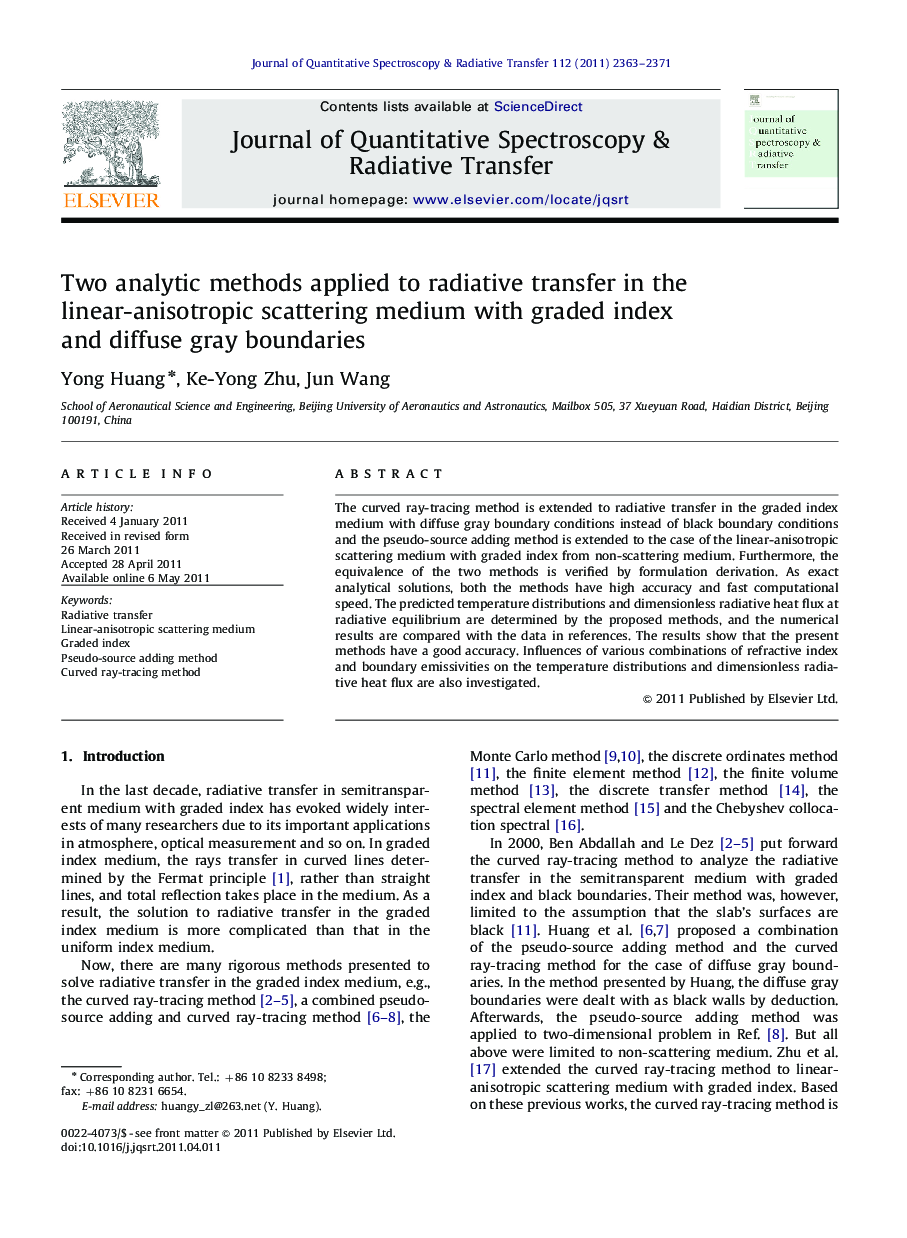| Article ID | Journal | Published Year | Pages | File Type |
|---|---|---|---|---|
| 5429331 | Journal of Quantitative Spectroscopy and Radiative Transfer | 2011 | 9 Pages |
The curved ray-tracing method is extended to radiative transfer in the graded index medium with diffuse gray boundary conditions instead of black boundary conditions and the pseudo-source adding method is extended to the case of the linear-anisotropic scattering medium with graded index from non-scattering medium. Furthermore, the equivalence of the two methods is verified by formulation derivation. As exact analytical solutions, both the methods have high accuracy and fast computational speed. The predicted temperature distributions and dimensionless radiative heat flux at radiative equilibrium are determined by the proposed methods, and the numerical results are compared with the data in references. The results show that the present methods have a good accuracy. Influences of various combinations of refractive index and boundary emissivities on the temperature distributions and dimensionless radiative heat flux are also investigated.
⺠The curved ray-tracing method is extended to the case of diffuse gray boundaries. ⺠The pseudo-source adding method is extended to the case of scattering medium. ⺠The equivalence of the two methods is verified by derivation. ⺠Influences of various combinations of n and ε on radiative transfer are investigated.
